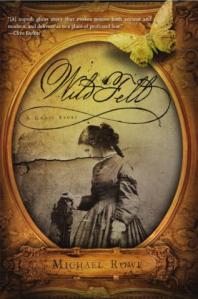I’ve been sporadic (to put it mildly) about blogging. It’s a new year, but I’m going to skip the good intentions and promises to do better this year. However, it’s traditional to look back and look ahead when the calendar turns over, so in an effort to prove I can do traditional, here goes.

In 2018, I wrote some new short stories and submitted stories both new and old. Rejection occurred (of course), but two were accepted (more on that later). Definitely one for the win column.
I left one job and found another. Big win. In between, I worked three days at a Dairy Queen, but that’s a story for another time. A time with alcohol. Lots and lots of alcohol.
I went to Europe twice. Norwich remains a favorite city, and I’ve added Düsseldorf to the list. How can this be anything but a win?
The publisher of my two novels, The Ceiling Man and Ghosts in Glass Houses (by my much nicer alter ego, Kay Charles) stopped accepting and publishing new books. However, they didn’t completely close-up shop, and both books are still available. This makes me much luckier than the many authors whose books lost their homes in the shuttering of too many publishers last year. (Note: The Kindle version of Ghosts is on sale in the US for 99¢ through Wednesday, January 9th.) Not a win, but not a total loss either.

Tantor Media offered me a contract for the audio rights to The Ceiling Man, and I gladly took it. A win.
I remembered to get my flu shot. Another win.
There were a few more ups and downs but overall, despite horrible happenings in the world, my little corner of the universe wasn’t so bad. I’ll take it. And I am grateful to all who helped make it a good year.
♦
Looking forward to this year, I’m excited.
Tantor’s audio edition of The Ceiling Man is scheduled for release on January 29th. (As I write this, the cover image at that link is a placeholder.) It should be available through Audible, Amazon, iTunes, and all the other usual audiobook outlets. It may even show up in Overdrive or Hoopla—check your local library.

On February 22nd, C.M. Muller’s new anthology Twice-Told: A Collection of Doubles will be released. It includes my story, “Zwillingslied.” I’ve read the proofs on this one folks, and it’s not to be missed. Twenty-two original takes on the doppelgänger theme and all of them wonderful. (Well, at least 21 are. Not so sure about that “Zwillingslied.”)
Sometime in 2019, date to be announced, “That’s What Friends Are For” will appear in David Longhorn’s Supernatural Tales. This weird little haunted house story has netted me the best rejection letters ever. The kind you read to make yourself feel better when the writing isn’t going well. (Yes, that sort of rejection letter does exist!) I am so glad it’s found a home and a wonderful home at that.
♦
The first thing I did in 2019 was pull out a piece of knitting I started on June 8, 2015 and put away a month later in frustration over what turned out to be an error in the pattern.

I intended to unravel it and use the wool for something else. Instead, I decided to finish it. It was complicated enough that I couldn’t listen to an audiobook or watch a movie or otherwise multitask while working. Which made it a contemplative experience. Which is not necessarily good thing for a pathological over-thinker. (Okay, I will make a New Year’s resolution: No more introspection for the next 365 days.)
Somewhere along the line, with all the unknitting, ripping out, and reknitting, the mistakes I tried to fix and those I decided to ignore, and the hole that appeared while I was neglecting and avoiding it, the thing became a metaphor for my entire life.
After three and a half years, I finished it.
And I’m going to wear the hell out of it, badly applied patch and all.
Happy New Year all.


